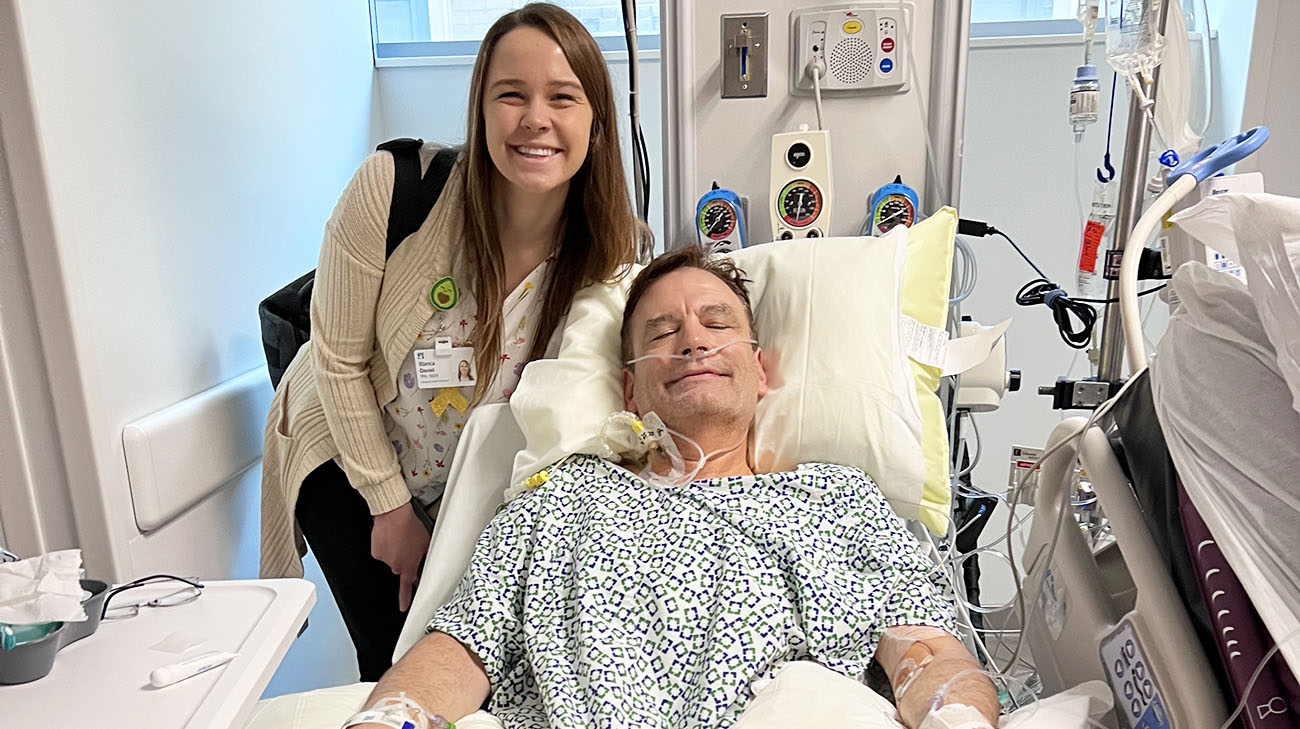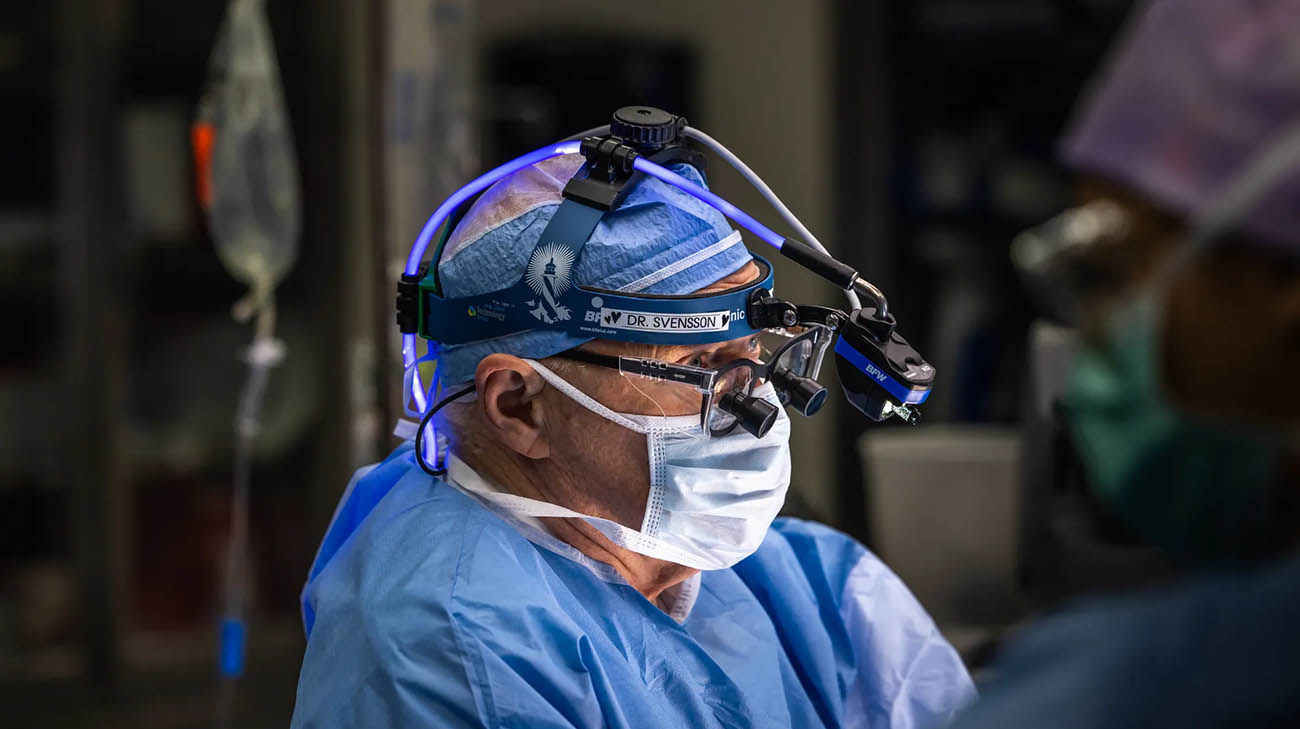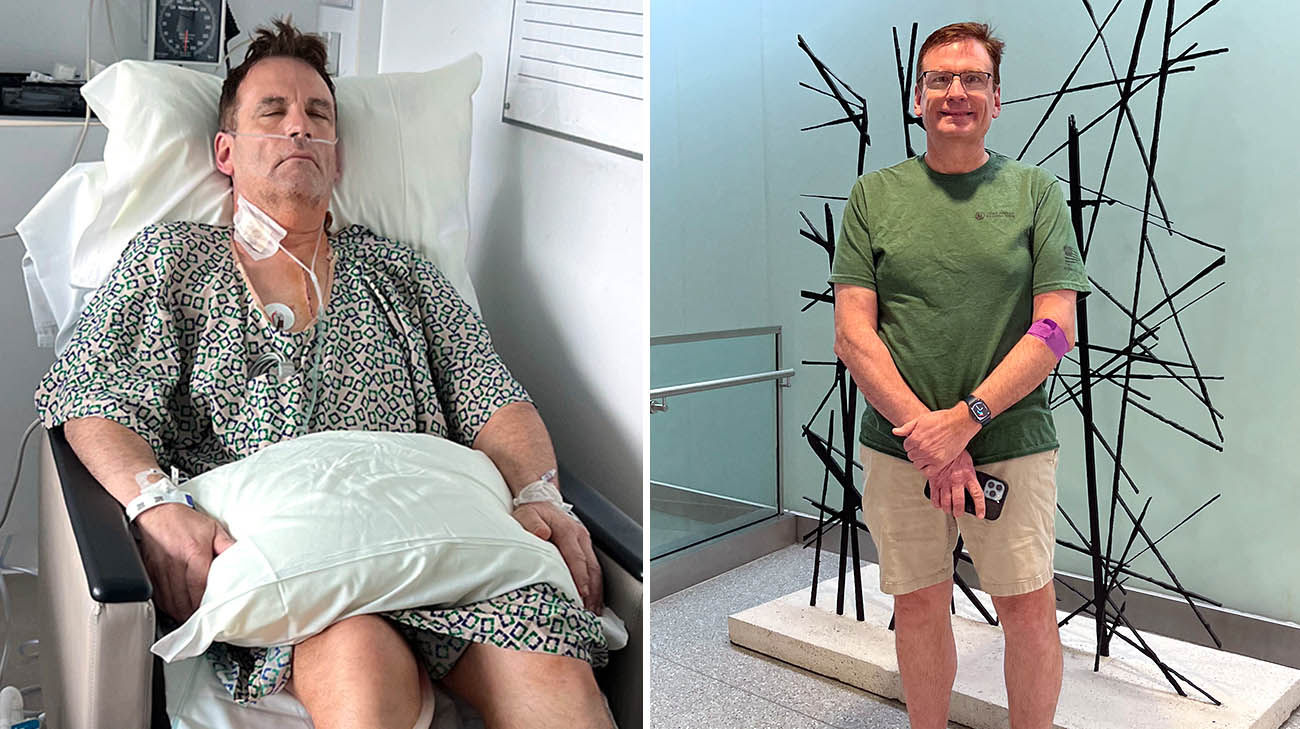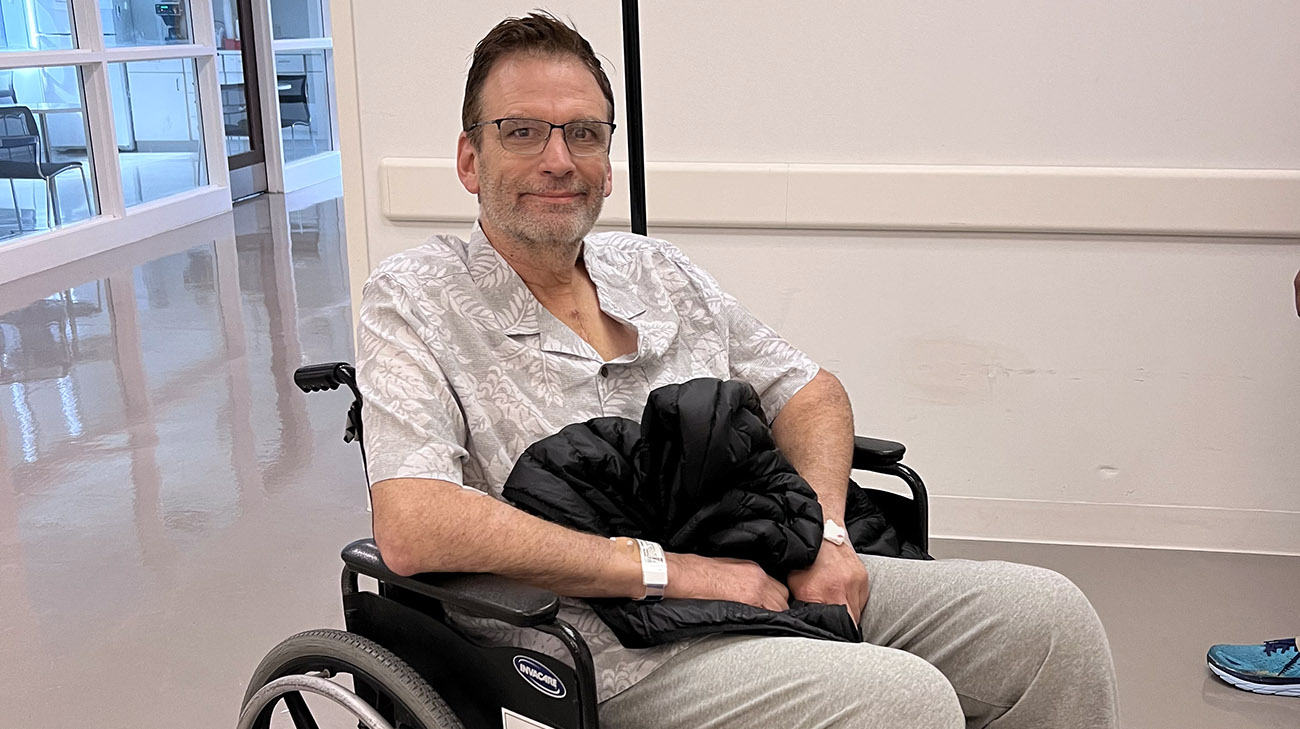
At the insistence of his girlfriend, a 20-year-old University of Cincinnati student who fell ill at a 2022 college football game went straight to the emergency department. Tests revealed an aortic dissection that resulted in life-saving heart surgery.
That quick and decisive action not only saved the young man’s life, but it also helped save his uncle, Thomas Daniel’s, too.
Thomas, now age 58 and a resident of Tiffin, Ohio, and his four siblings were subsequently tested for a rare connective tissue disorder called Loeys-Dietz syndrome. It’s a genetic condition that if undetected and untreated can lead to an aortic aneurysm or an aortic dissection, both serious conditions affecting the aorta, the largest blood vessel in the body.
Soon after discovering he tested positive for developing the condition, Thomas made an appointment with Cleveland Clinic cardiologist Vidyasagar Kalahasti, MD, who is Director of the Cardiovascular Marfan Syndrome & Connective Tissue Disorder Clinic. Thomas felt comfortable at Cleveland Clinic, where years before he had been successfully treated for thyroid cancer.

Thomas with his daughter after undergoing heart surgery at Cleveland Clinic. (Courtesy: Thomas Daniel)
“I thought, ‘This is important and I’m not going to mess around with it,’” recalls Thomas, who has owned and operated a pizzeria in Fostoria, Ohio, since 1992. “But at that point I’m still thinking nothing is wrong with me because I’m feeling great.”
Thomas, who had never experienced symptoms related to heart issues, was surprised a CT scan, MRI, echocardiogram and other cardiovascular tests revealed his ascending aorta was enlarged and would require corrective surgery as soon as possible.
Fortunately, his cardiothoracic surgeon at Cleveland Clinic would be Lars Svensson, MD, PhD, Chief of the Heart, Vascular & Thoracic Institute. Dr. Svensson has pioneered research around patients with Marfan or Marfan-like conditions. Data from his work would ultimately help support the discovery of Loeys-Dietz syndrome and the gene mutations that cause it.

Dr. Svensson performing cardiac surgery at Cleveland Clinic. (Courtesy: Cleveland Clinic)
Dr. Svensson had also helped establish the accepted recommendations and guidelines used to assess whether certain aortic problems, like Thomas’, needed surgical intervention.
As Dr. Svensson explains, “The two things that are primarily the drivers for surgery are the size of the aorta and the degree of leakage of the aortic valve. If the aorta is abnormally enlarged, we have found that patients for whom we provided surgical intervention before dissection survive and do very well long term.”
A few weeks after his consult, Thomas underwent a reimplantation operation led by Dr. Svensson and his team.
According to Dr. Svensson, he performed modified prophylactic aortic surgery on Thomas. The operation involved freeing up the aortic valve from the surrounding heart and separating the tissues so he can access the aortic valve.

After undergoing testing at Cleveland Clinic, Thomas was surprised to learn his ascending aorta was enlarged and would require corrective surgery as soon as possible. (Courtesy: Thomas Daniel)
Dr. Svensson inserted a polyester tube around the aortic valve, to reimplant the valve within the tube graft, anchored by sutures through the tube. Finally, he used the coronary artery “button” surgical technique to reattach the coronary arteries to the new graft.
“It’s a complicated operation, but the way we do it has proven to be very safe,” Dr. Svensson adds, noting only about 4% of patients long term require follow-up surgeries. “And I’m not aware of any patients with Loeys-Dietz syndrome we have operated on by reimplantation having gone on to experience an aortic dissection.”
Thomas was hospitalized for about one week, then recovered at home and underwent physical therapy before returning to work 12 weeks later.

Thomas was in the hospital for about one week before being discharged to go home. (Courtesy: Thomas Daniel)
“I’ve only had to make a few adjustments to my work routine,” says Thomas. “I’m doing pretty good. I’ve really had a positive experience with everything.”
He joins Dr. Svensson in encouraging anyone with a blood relative of someone who has Loeys-Dietz syndrome, Marfan syndrome or other genetic conditions to get tested. Both of Thomas’ daughters underwent testing. Results showed his 27-year-old daughter, Madison, does have Loeys-Dietz syndrome.
Madison is regularly examined by Dr. Kalahasti and, to date, has shown no signs of an aortic or other connective tissue problem.
“Four of my siblings tested positive, and each one who did, has a child who also tested positive,” notes Thomas. “That’s why it’s so important to get tested. You just never know.”
Related Institutes: Heart, Vascular & Thoracic Institute (Miller Family)Patient Stories
Perseverance and Focus Help Ovarian Cancer Survivor Beat the Odds HIPEC During Surgery Helps Keep Disease Under Control
Dec 10, 2025
Boy With Advanced Liver Cancer Thriving After Lifesaving Living Organ Donation From Aunt
Dec 8, 2025
Against All Odds A Journey of Recovery After Stroke
Dec 5, 2025
“Dr. Pervez is absolutely incredible, I can’t say enough about him and the speech therapy department. And Cleveland Clinic is phenomenal. They’ve always been wonderful, and I recommend them to everyone I talk to.”


